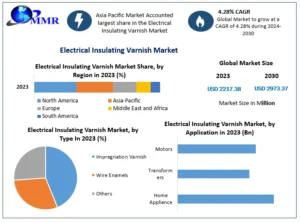When setting up a multi-language website, there are several multilingual Search Engine Optimization (SEO) factors to consider. Multilingual and multiregional SEO are crucial strategies for businesses and websites targeting multiple languages and geographic locations. By optimizing your website for different languages and regions, you can improve visibility, user experience, and conversion rates in those areas.
1. What is Multilingual SEO?
Multilingual SEO focuses on optimizing your website for users who speak different languages. This involves:
- Translating content into various languages.
- Ensuring search engines understand which language version of your site to show to users based on their preferences and location.
Key Multilingual SEO Components:
- URL Structure: Use a logical structure such as subdomains (e.g.,
fr.example.comfor French) or subdirectories (e.g.,example.com/fr/). - Hreflang Tags: Implement hreflang tags to help search engines understand the language and regional targeting of each page.
- Localized Content: Translate and adapt content to suit the cultural and linguistic needs of each audience.
- Metadata Localization: Meta titles and descriptions should also be translated and optimized for each language version.
2. Best Practices for Multilingual and Multiregional SEO
A. Choosing the Right URL Structure
When optimizing for multiple languages and regions, choosing the right URL structure is essential for both SEO and user experience. There are three primary approaches:
- Country-specific domains (ccTLDs):
example.fr- Pro: Clear indication of the website’s regional focus.
- Con: Managing multiple domains can be costly and time-consuming.
- Subdomains:
fr.example.com- Pro: Easier management under one domain while targeting specific regions.
- Con: May not be as strong a regional signal as ccTLDs.
- Subdirectories:
example.com/fr/- Pro: Centralized domain authority and easier to manage than ccTLDs.
- Con: May be slightly weaker for geo-targeting compared to ccTLDs.
-
B. Use of Hreflang Tags
Implementing hreflang tags helps search engines understand which version of your content to serve based on a user’s language preference and location. Each page should have hreflang annotations for all the available language or regional versions, helping prevent duplicate content issues and ensuring the correct page is shown to users.
- Syntax Example:
html
<link rel="alternate" hreflang="en" href="https://www.example.com/" />
<link rel="alternate" hreflang="fr" href="https://www.example.com/fr/" />
C. Localized Content Creation
Creating localized content is key for engaging users in specific regions. Instead of just translating your content word-for-word, you should localize it to reflect cultural nuances, local interests, and regional holidays.
Tips:
- Cultural Sensitivity: Be aware of cultural differences when adapting content.
- Product and Service Relevance: Highlight products or services that may be more relevant to a particular region.
- Local Events: Create content around local events or trends.
D. Regional Keyword Research
Keywords vary from country to country. Conduct localized keyword research to find search terms relevant to each region. Use tools like Google Keyword Planner, Ahrefs, or SEMrush to find top-performing keywords in different countries or languages.
E. User Experience (UX) Considerations
- Automatic Redirects: Be careful with automatic language or region redirects. Instead, provide users with a visible language selector so they can choose their preference.
- Consistent Design: Maintain a consistent website design across different languages and regions to provide a cohesive brand experience.
3. Common Multilingual and Multiregional SEO Challenges
A. Duplicate Content Issues
If your website offers similar content in different languages or regions, search engines might see it as duplicate content. Hreflang tags and careful localization help mitigate this risk.
B. Misuse of Hreflang Tags
Improper implementation of hreflang tags can lead to search engines displaying the wrong version of your website. Test hreflang tags using tools like Google’s Search Console to ensure proper indexing.
C. Geo-targeting Missteps
If you use improper geo-targeting techniques, your website may not rank as well in certain regions. Use Google Search Console’s International Targeting feature to set a country target for each page or subdomain.
By focusing on these best practices, you can develop a robust multilingual and multiregional SEO strategy that helps your website rank higher in different regions, attract the right audience, and ultimately drive more conversions across global markets.
- Syntax Example:





